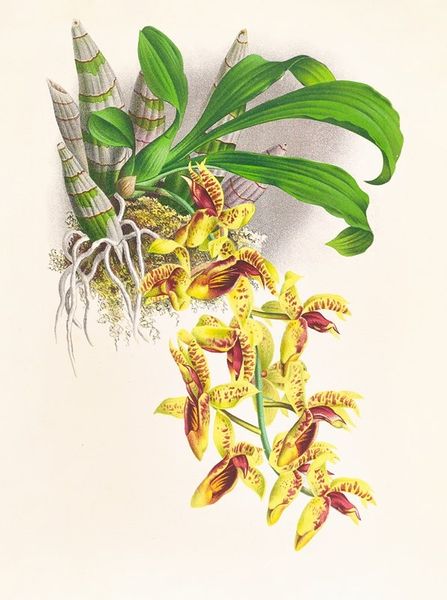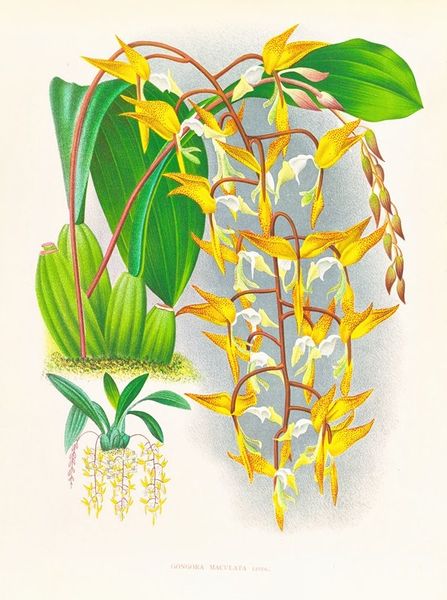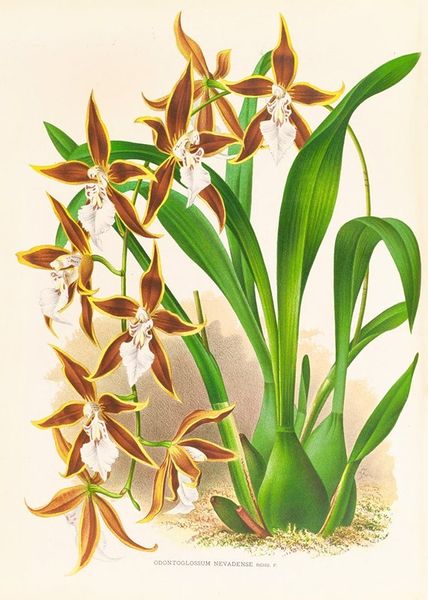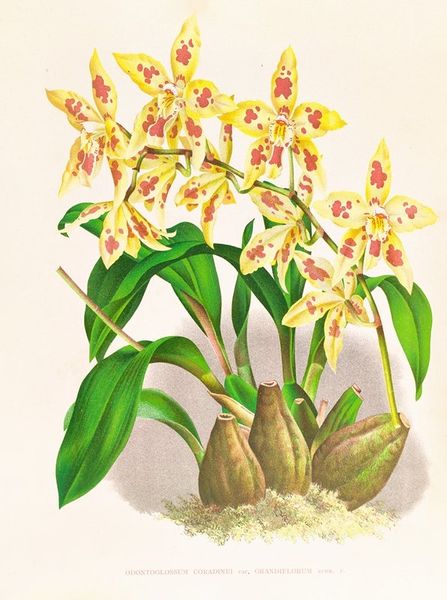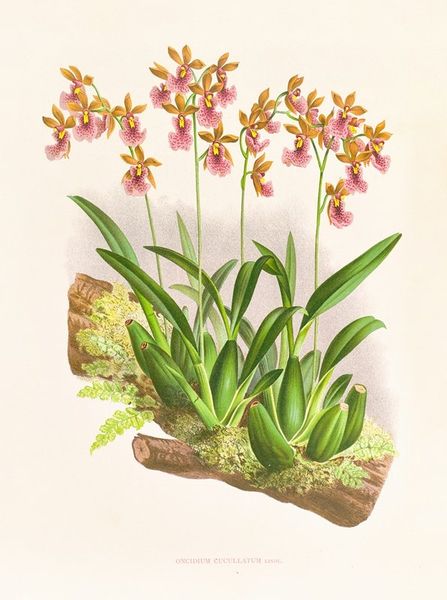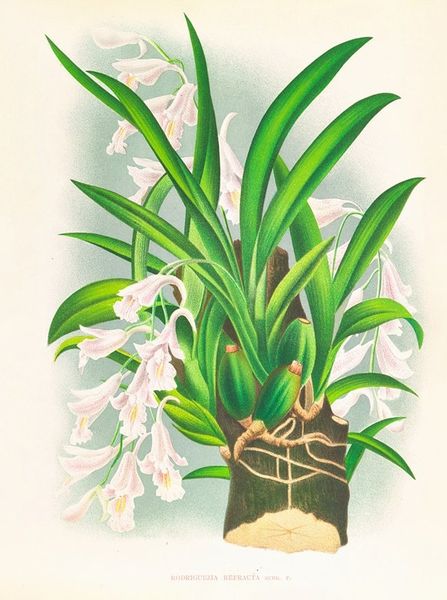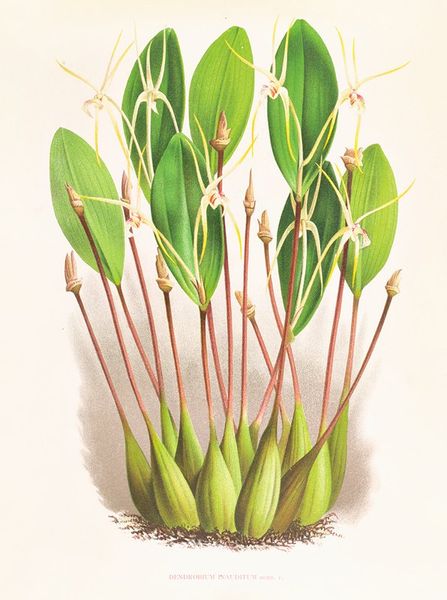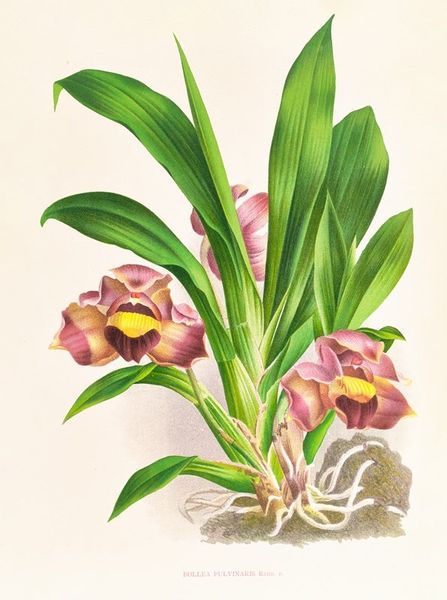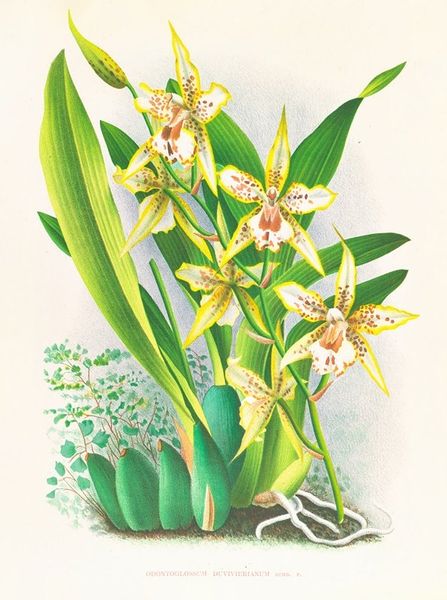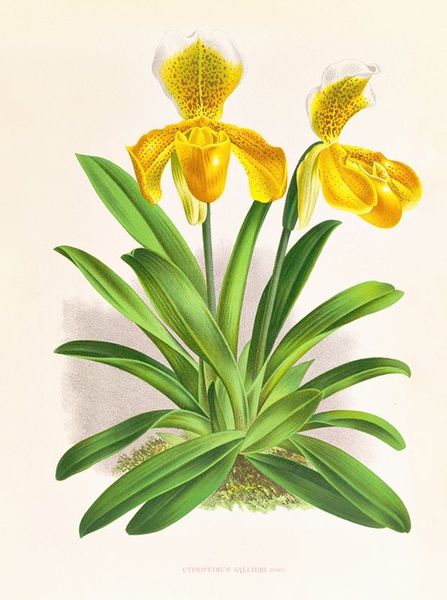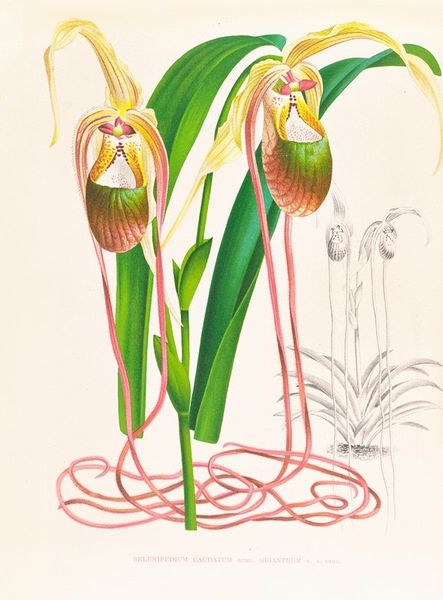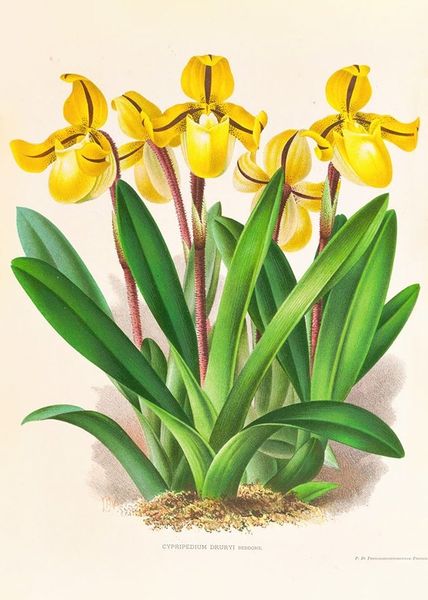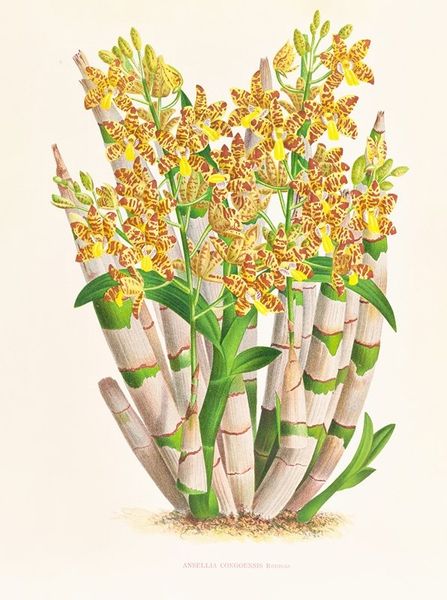
Copyright: Public Domain: Artvee
Curator: I am immediately struck by the image's otherworldly grace; it's simultaneously scientific and romantic, isn't it? Editor: Absolutely, a cascade of ethereal forms rendered in the stark realism of scientific observation. Shall we introduce our listeners to the piece? This is "Brassia caudata," a watercolour painting by Jean Jules Linden dating between 1885 and 1906. It depicts, as the title suggests, a species of orchid, its spider-like blossoms exquisitely detailed. Curator: Linden's "Brassia caudata" reminds me of the Victorian fascination with the exotic, but on another level the very distinctive orchid represents adaptation, survival, resilience. This image suggests how strength may manifest in forms of great beauty. Editor: Precisely. The meticulous attention to detail aligns with the scientific ethos of the period, when documenting natural specimens was considered crucial. It's worth thinking about how colonial structures facilitated and propelled the collection of specimens such as this one depicted in this piece. But it is more than a clinical depiction. Look at the contrast between the vibrant, spiky flowers and the robust, almost sculptural leaves. Curator: And see how he positions them above a rough and textured pot! It's an interesting juxtaposition of cultivation and wildness. Those roots symbolize tenacity and strength. In that respect, Linden is drawing upon longstanding botanical symbolism that imbues flora with deeper meaning. Editor: And the fact that these plants appear rooted in what appears like nothing more than air, and their almost unsettling appearance prompts questions. Is its inclusion in the artistic historical canon not another aspect of the violence inherent in our own nature toward the other. Or am I overstepping? Curator: It does, and you may be right to point at that. Still, consider how the cultural associations of orchids contribute. The plant's distinctive look would connote rarity and a certain untouchable, somewhat uncanny, character that would stand in opposition to the period's conventional gender norms. I find that notion to be powerful. Editor: It is, indeed. I also am left wondering, did Linden intend it that way? Still, his work prompts discussions that reveal how social constructs, biases and anxieties affect how we understand and position species like the orchid. It makes this illustration quite relevant. Curator: And that’s precisely the reason images hold enduring fascination, is it not? Because even those of an assumed objectivity still tell stories about the people and contexts surrounding their making. Editor: Absolutely. By interlacing observation with interpretation, the illustration reveals profound ecological awareness as much as artistic intentionality.
Comments
No comments
Be the first to comment and join the conversation on the ultimate creative platform.
